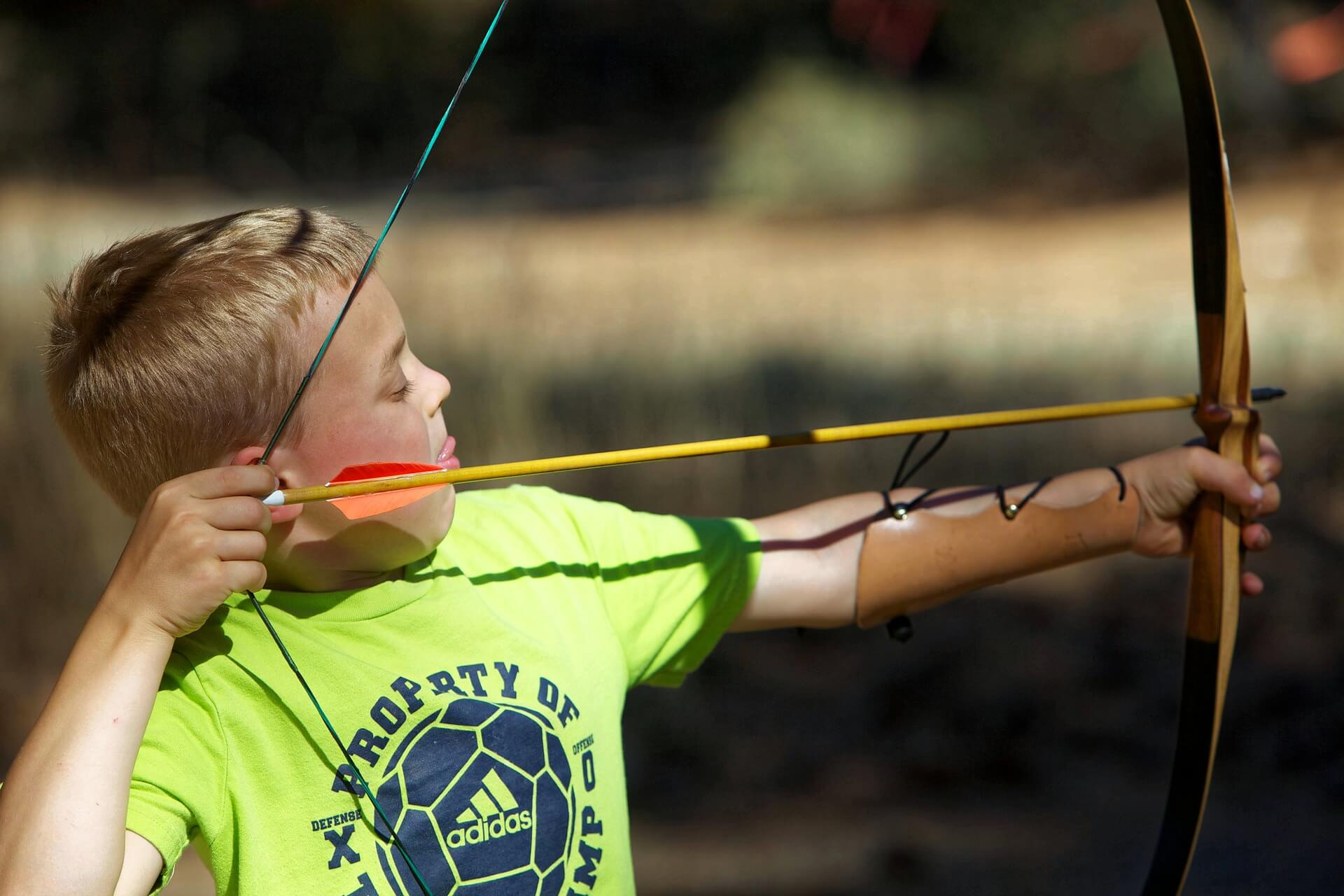A bow scale measures your draw weight and is an excellent tool to determine which bows and arrows to use. You can improve your accuracy by knowing your draw weight, and if you are new to archery, measuring your draw weight isn’t a step you want to skip.
What is Draw Weight?
Simply put, draw weight is the maximum weight you experience when drawing back the bow. Your peak weight ultimately determines the type of bow and arrows that is best for you. Although a higher draw weight means an arrow will go farther, it isn’t a good idea to use a bow with a heavier draw weight than you can handle because your arm muscles will shake and your accuracy will be off. Learn more about draw weight and bow draw here.
Traditional and Recurve Bows vs. Compound Bows
A traditional and recurve bow’s draw curve is almost linear. It tells us that the draw weight increases with the draw length, and the peak draw is at the end of the draw. That’s why both children and adults can launch the same bow without trouble. Most standard bows have a draw weight between 15 and 55 pounds.

For compound bows, the measuring process is a bit more complicated. With a compound bow, the draw weight isn’t measured at the end of the draw. Every compound bow has a different place where the draw weight is the highest, often found in the middle of the draw. Compound bows have draw weights from 45 to 70 pounds.
Check out top recurve bows here.
Why Draw Weight is Important
Whether you are a beginner or an experienced archer, it is crucial to understand draw weight. Knowing your draw weight will enhance your technique and accuracy. Here are some factors affected by your draw weight:
Arrow speed
An arrow will fly faster with a heavier bow, and it gives the advantage of wind resistance and a more stable flight.
Draw strength
If you have some archery experience, you’ll know that an increased draw weight makes your bow more accurate, but if you don’t have enough arm strength to pull it back, your arms will shake.
It is vital to choose a manageable draw weight. You’ll be better off choosing a lighter draw weight than a heavier one. A heavier bow could decrease your accuracy as well as your overall technique.
Arrow spine
The arrow’s spine refers to its flexibility, and the level of flexibility can differ depending on your draw weight, which gives you an indication of which arrows to use. For archers with a heavier draw weight, stiff arrows are a good option. But more flexible arrows are better for archers with a lower draw weight.
How to Use a Bow Measuring Scale
Measuring your draw weight is an easy process, but we suggest asking a friend to help you record the scale readings, as it can be tricky to do this by yourself.

Traditional and recurve bow
- Attach a scale to your bow. Be sure to hold the scale with the device’s hook between your fingers and the string.
- Draw the bow back as far as you can.
- Once you’ve reached your furthest anchor point, record the scale reading.
- Repeat this process three to five times to get an average for your draw weight.
Compound bow
- Attach a scale to your bow and make sure you’re only holding on to the device.
- Draw the bow until you feel the heaviest drawing point. You might have to move back an inch if the weight decreases.
- Keep your bow in the heaviest weight position and record the scale reading.
- Repeat the process until you have found the highest drawing weight on your bow.
Helpful Tips
Even if you know your exact draw weight, it can still be hard to choose a compound bow that is right for you. Here are some tips to make the purchase easier:
- Stick to your draw weight. You’ll damage your technique if you aim for higher draw weight.
- There are compound bows with adjustable draw weights that are great if you are looking to increase your draw weight as you get stronger.
- Test the draw weight before you buy a bow. You won’t automatically have a feel for a 45-pound bow if you’ve never tried it before.
- Remember that if you’re not used to a specific draw weight, you won’t simply ease into it. It can take years to perfect your technique and accuracy. Using a heavier bow won’t help you in this regard.

